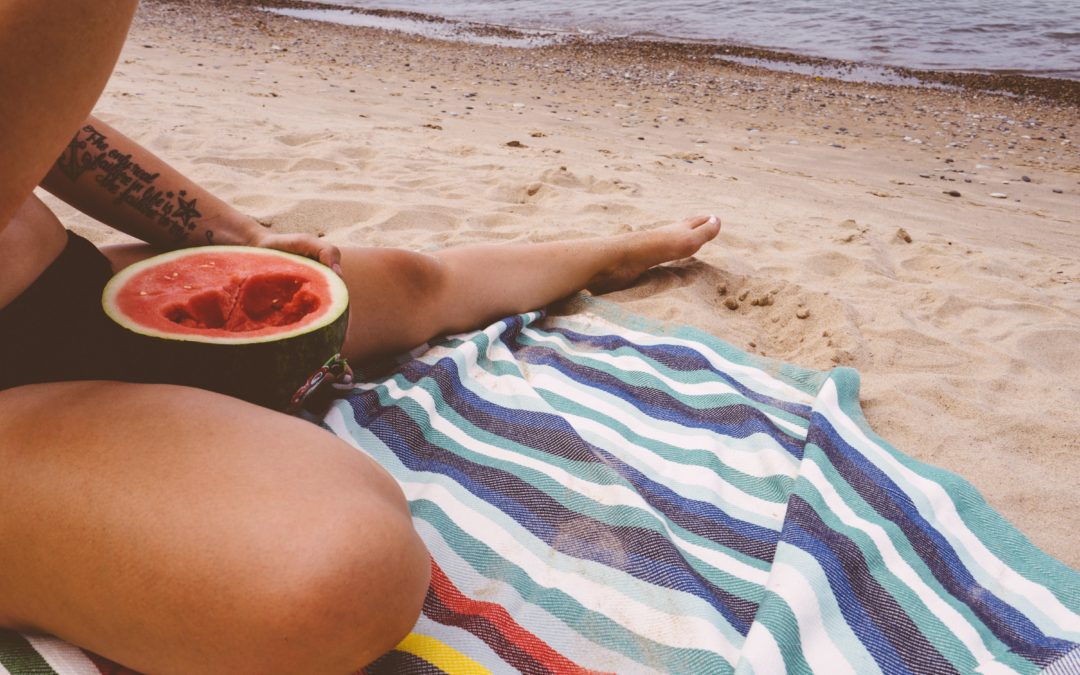So, you’ve read about Intuitive Eating and you feel it might be right for you. But, where do you start? There is so much information out there, and it all seems to say something different. Here are my tips for starting Intuitive Eating.
One common misperception is that in Intuitive Eating you throw all caution to the wind and just eat whatever whenever it sounds good. While there is a grain of truth to this in that you want to allow all foods back into your life in a way that feels good to your body, I find that it is often counterproductive to just eat your way through all the foods you’ve been avoiding. There’s a gentler, more controlled way to do it that won’t leave you feeling out of control.
What kind of eater are you?
First, what kind of eater are you? Read this list to see where you fall now in terms of eating behaviors. This will help you determine where to start.
A. Very restrictive. You have a large base of food rules and it is VERY hard for you to deviate from what you normally eat. You’re near tears if you have to eat something with sugar or carbs, and the idea that you’ll have to learn how to eat all food groups gives you major anxiety. It does not matter what your weight is like or how many times a day or week you binge. All that matters is your level of fear or anxiety about eating foods that you have deemed forbidden.
If you fall into this category you’ll need to ease into Intuitive Eating.
B. Experimenting with new foods already. This categorizes you if you are pretty much already “over it” with restriction or you’re already trying out new foods (and either having “success” or binging on them).
If this is you, building slowly upon what you’re already doing will be the place to start.
First, Examine Your Thinking About Food
Do you believe that you can’t control yourself around sugar? Or that if you have just one cookie you’ll eat the whole box? These are black-and-white beliefs that need to get challenged. Believing that you will be out of control around certain foods or food groups is a self-fulfilling prophecy, so start challenging these beliefs now. Remember, food is not an addictive substance and doesn’t actually have any magical powers over you that MAKE you do anything you don’t want to do.
I recommend writing out all of the food rules that have been running around in your head. These tend to drive food choices and trip up your Intuitive Eating process. It helps to see your list on paper so that when your brain starts telling you lies, you have a list of reminders about what NOT to listen to.
As you embark on this process, you may have to use some self-talk strategies to help you move through mixed feelings or fear about eating foods that you have deemed “bad.” This might sound like:
“Ok, so you really want pizza right now, but you’re afraid you won’t be able to stop, or that you’ll feel gross afterward, or that you won’t be able to eat anything later because you ate “bad” now. Those are just old diet culture ideas. They aren’t true. People eat pizza for lunch all the time and don’t instantly gain weight. You’ll just eat it mindfully, enjoy it fully, and move on with life. It’ll be great.”
Introduce New Foods at Your Own Pace
You don’t have to jump off a cliff and have a giant food free-for-all. You can if that is where your recovery is taking you. There is certainly no harm in that. I found, in my own journey, that I needed to take it more slowly.
I started with incorporating one finite sweet treat per day. What I mean by finite is that it has an end to it. I was not bringing home a Costco-sized bag of Oreos. I was going out to the ice cream shop and getting a scoop with all the toppings on it, or going to Starbucks and ordering a brownie, or getting one donut from the grocery store. I wasn’t bringing an entire bag of something home.
Also, this one sweet treat a day was a requirement, an assignment. I had to eat that one sweet treat. I was not allowed to skip. Since I had to eat it, it gave me permission to explore things I really liked. And, when I wanted to keep eating once the finite treat was over I could tell myself: “It’s OK. You have to eat another sweet treat tomorrow. And, since you love this so much you can come right back here and order the very same thing!” This approach kept me from feeling binge-y. I knew I was having more tomorrow, so why did I need to overdo it today? Especially when binging didn’t make my body feel well.
If sweets are not your thing, this approach applies to other foods that you feel out of control around. Once you’re feeling comfortable with your finite sweet treat every day and don’t feel binge-y or out of control, then you’ll know you can let loose a little bit more. You’ve learned how to eat foods that were formerly forbidden without feeling crazy around them, and this confidence bleeds over into other foods and other eating situations.
Mindfulness is Key
Whether you’re implementing one sweet treat a day or you’re already eating pretty much whatever you want, mindful eating is a key ingredient. It is hard to know how much your body wants or whether you even like something if you’re not paying attention to how you eat. Notice I didn’t say “what” you eat. That’s not the point. “How” you eat is the most important thing with mindfulness.
Imagine the difference between picking up your sweet treat from Starbuck’s and hopping in the car to drive across town. You’re balancing your treat on your lap while the chocolate begins to melt in the heat of the day. You’re worried about traffic, listening to music, trying not to get chocolate on your outfit, and driving with one hand. Have you really tasted the treat? Have you experienced it fully? Likely not.
Now imagine sitting down at Starbuck’s to have your treat. You find a cozy little spot in the corner where you can look out the window. You take a bite and roll it around in your mouth, paying attention to the texture, the sweetness, the aroma, even the presentation. You take a few moments out of your busy day to make this sweet treat like a self-care experience. You’re calm and in the moment. You pause between bites to savor the flavor and your surroundings. Conscious about how your body feels, you take care to be comfortable, sitting in a position that feels good. You take in the ambiance, the lighting, the music, and your breath.
While this may sound like a lot of work at first, I promise once you get used to it, you won’t want to eat any other way. You feel so much more satisfied and nourished when you take the time to eat mindfully. And, you’re much less likely to want more food than you need because you’re more satisfied.
If You’re Experimenting With New Foods Already
Challenging your mindset around good food versus bad food, eating mindfully, and continuing to fill your head with anti-diet messaging are all helpful components. I highly recommend reading a little bit of the Intuitive Eating book or others that are in alignment with IE principles every day. Even a paragraph or so helps to keep you thinking with the right mindset.
Additionally, working with your hunger and fullness is a key component. If you’re consistently getting overly hungry and finding yourself eating more than feels good to your body later in the day, then this would be a pattern to work on. Not because the whole goal is to eat less, but because your body feels better when you’re eating regularly and not getting to the extremes of hunger and fullness. Play around with the Hunger Discovery Scale in the Intuitive Eating book to see if you can flush out any patterns and get to know your own body’s cues better. Being connected to your hunger and fullness cues is an important key in the process.
Remember that Intuitive Eating is your journey. No one else’s. If it feels right to you to start by implementing the one sweet treat (or any other recommendation I have) then great! If not, and you have another way, that’s amazing too. Intuitive Eating is about listening to your own cues and needs and finding what works for you.


